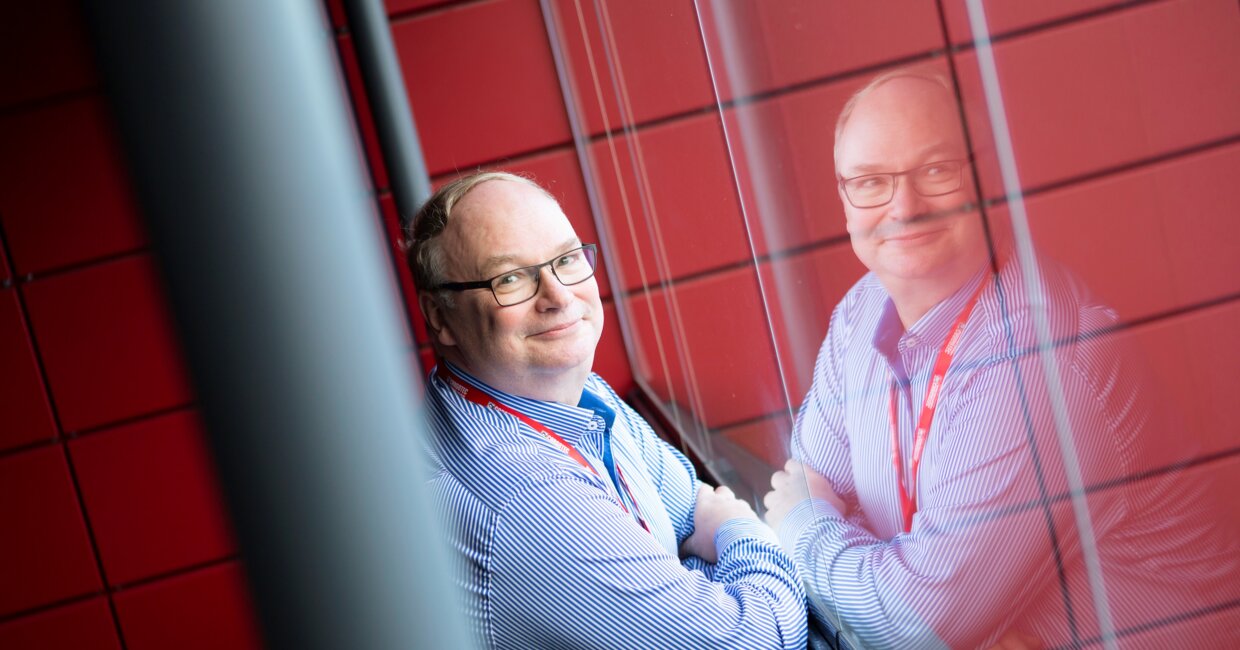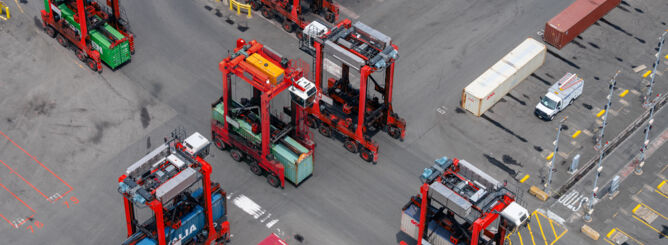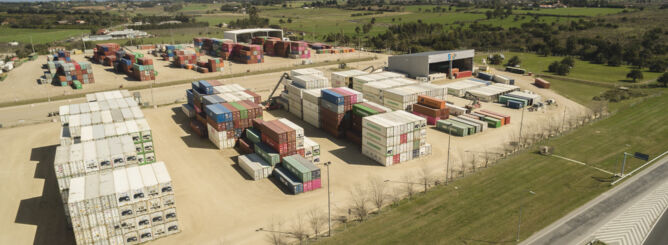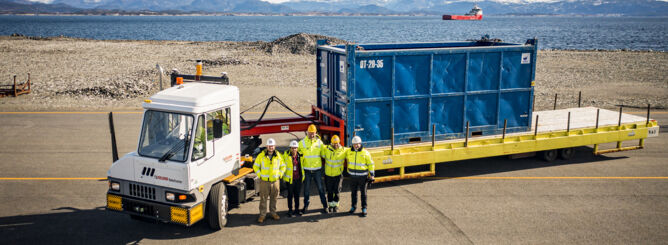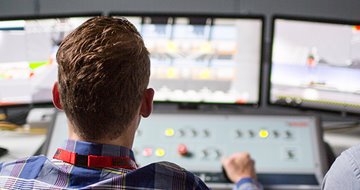Kalmar moves towards 5G
In the future, 5G will fulfil port automation needs for reliability, capacity, speed and security. Kalmar has successfully conducted one of the industry's first trials with ultra-reliable, low-latency 5G technology in collaboration with Nokia.
Pekka Yli-Paunu, Director of Automation Research at Kalmar, reviews the trial with satisfaction. Expectations for 5G technology have been high in the field of cargo handling, and now they are backed up by test results. 5G supports a wide variety of near future use cases and boosts development of applications in the logistics sector.
Yli-Paunu explains: “Thanks to the trial with Nokia, we were able to build a technology road map to 5G, to see how to proceed towards it and when to take certain steps.”
In the joint trial, Nokia and Kalmar successfully demonstrated the ability of URLLC (ultra-reliable low latency communications) technology to advance container yard automation. The trial was carried out at Kalmar’s Technology and Competence Centre test yard in Tampere, Finland. A case study of an automated rubber-tyred gantry crane (RTG) yielded practical insight into the industry’s requirements for 5G technology.
“RTG is equipped with multiple cameras, and video data takes a lot of bandwidth. Remote control means there is a need for low and predictable latency,” Yli-Paunu says. ”On the other hand, advances in connectivity give us the opportunity to develop the next generation of remote control that may utilise, not only video, but audio and haptics as well.”
Safer and more reliable communications
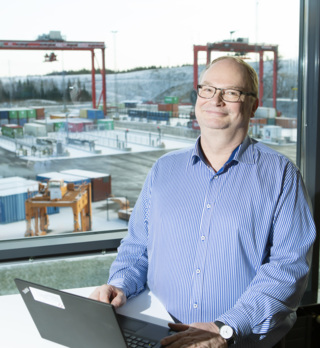 All automated port operations rely on real-time connectivity. Once 5G reaches its full potential, it should fulfil the needs for reliability, security, speed and bandwidth, even when different applications have varying requirements. Meanwhile, there will be useful wireless solutions with 4G LTE and WiFi, and Kalmar is exploring these as well. But, as Yli-Paunu points out, 5G will be the industrial standard of the future and a concept that combines terrestrial and mobile networks.
All automated port operations rely on real-time connectivity. Once 5G reaches its full potential, it should fulfil the needs for reliability, security, speed and bandwidth, even when different applications have varying requirements. Meanwhile, there will be useful wireless solutions with 4G LTE and WiFi, and Kalmar is exploring these as well. But, as Yli-Paunu points out, 5G will be the industrial standard of the future and a concept that combines terrestrial and mobile networks.
One major change that 5G is bringing is the ability to partition the network into virtual networks, so-called slices. For example, a private network can be deployed to cover a port area and customised to meet various application needs. ”When a terminal tractor is connected to a specific slice, for example, its activities are easily and accurately monitored in all circumstances. That adds to the overall safety and operational efficiency of a port,” says Yli-Paunu.
A sliced private 5G network supports both human and machine communications and enables smarter cargo handling unlike any technology seen before.
”Kalmar is a dream come true for a person who is truly interested in technology."
An engineer’s dream
The joint trial of Kalmar and Nokia is part of a much larger research project, Wireless for Verticals, involving several industry research units and academic partners. Yli-Paunu sees that as an excellent opportunity for networking, getting fresh ideas for the future, and for co-shaping the standard.
”A diversified network is a valuable asset to our research team for keeping our finger on the pulse of technological development. At the moment, we are very interested in measurement techniques in the automotive industry and XR technologies.”
Trialling 5G combines elements that make an engineer’s life interesting: new technologies, useful solutions that solve customers’ challenges, and in the future, new scenarios created by IoT and Industry 4.0.
Yli-Paunu sees his work as an exciting adventure in technological development and making things ever better. ”Kalmar is a dream come true for a person who is truly interested in technology. The systems and devices you design become real and make big machines work – maybe even in front of your very eyes in our test yard!”
Pekka Yli-Paunu
Age: 56
Education: Licentiate in Technology, Automation & Hydraulics.
Primary work experience: 16 years of automation R&D at Cargotec and Kalmar, CEO in an engineering office, and several years as a research scientist at VTT, The Technical Research Centre of Finland.
Family: wife and son.
Hobbies: Sailing, boat DIY and maintenance, including technical devices – that’s plenty to do all year round!
